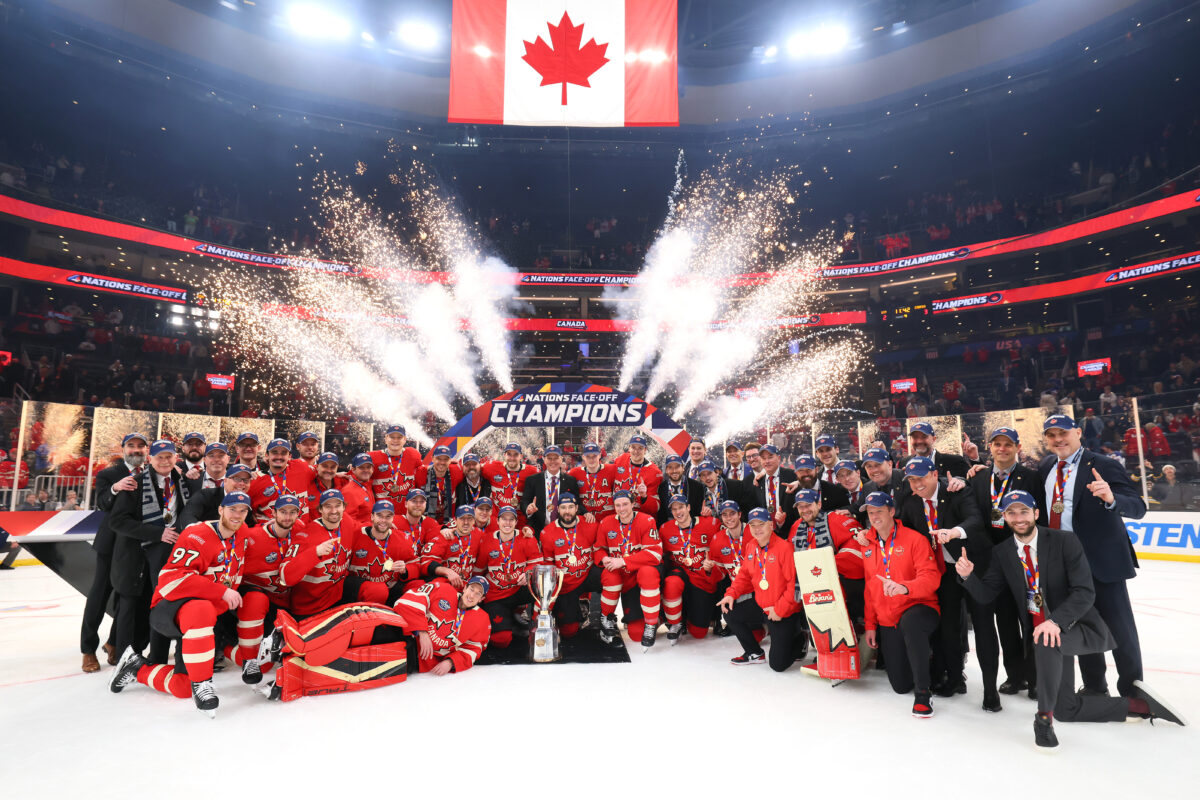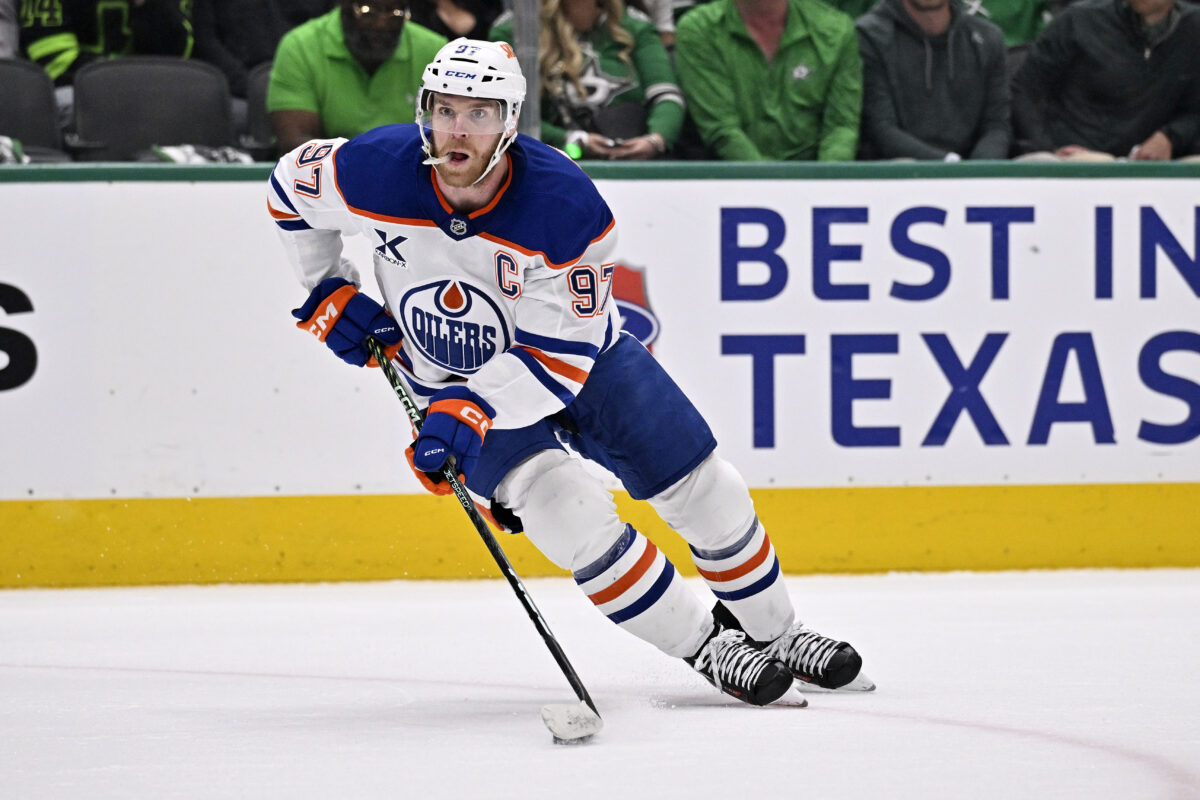Team Canada is gearing up for the 2026 Winter Olympics taking place from Feb. 6 – 22 next year in Milan and Cortina d’Ampezzo, Italy. Hockey fans will get a glimpse of what Team Canada might look like when the 2025 National Teams Orientation Camp opens in Calgary on Aug. 26. The burning question is whether the team coming out of that camp will bring home Olympic gold and show the world that hockey is still Canada’s game.
Deep down, despite the national angst before every Olympics about whether Canada is truly the world’s dominant hockey nation, Canadians believe it always has been and still is. As goaltending great Ken Dryden put it, talking about the Summit Series, “hockey was a Canadian game. It happened to be played by some other people, but really it was a Canadian game. And because Canada’s way was the best version of it, it meant it was essentially the only way to play” (from the book “The Series”, by Ken Dryden, Penguin Random House Canada, Aug. 2022). That belief has carried on through Canada’s Olympic victories in recent decades up until today.
Yet there’s still a lingering doubt in the Canadian psyche – are we truly the best? Is hockey still “our” game? And if it is, can we hang on to it?
Canada’s Case for Hockey Supremacy
Many of Canada’s international rivals must be baffled by Canadians questioning their country’s status as the world’s number one hockey power. After all, didn’t Team Canada show the world who was top dog at last year’s 4 Nations Face-Off? What’s to debate?

If that wasn’t enough, there’s Canada’s record in the five Olympic Games in which NHLers have been allowed to play – Canada took home three of a possible five gold medals. Even without NHLers, Canada is respectable – to wit, a bronze medal in the 2018 Games in PyeongChang, Korea. Canadian entries in the eight Spengler Cup tournaments held in the last 10 years took home the championship silverware in three. As for the International Ice Hockey Federation (IIHF) World Championships since 2016, Canada has racked up three gold medals, three silver and failed to medal just twice in the nine tournaments held since then. (No tournament in 2020 due to COVID)
As for Canadian women’s national teams, they are even more dominant than the men’s. In the seven Olympic Games since 1998 in which women’s hockey was included, Canada has won five gold medals and two silver.
When it comes to Canada’s future in international play, there’s little pointing to decline. In the IIHF World Junior Championship, Canada’s record since the tourney began in 1977 is 20 gold medals, 11 silver and seven bronze. There have been long stretches over which Canada thoroughly dominated the tournament. In the 1990s, Team Canada won seven consecutive gold medals. From 2005-09, they won five consecutive championship titles. When the team fails to medal, it’s usually because their top guns have graduated to the NHL, leaving a crop of younger players to be developed before they can contend again.
Canada continues to produce a steady stream of NHL talent – from Sidney Crosby and Connor McDavid to Cale Makar and Connor Bedard, just to scratch the surface. While the percentage of Canadian players in the NHL has been in steady decline for years, it still stands at 42%. What helps to explain this is that in the last 10 years, the number one overall NHL draft pick has been a Canadian six times. Despite all the hype about the USA replacing Canada as hockey’s dominant power, only two first overall NHL draft picks in the last decade carried an American passport.

Canada has a deep pool of hockey talent in the development hopper with over 470,00 players registered. That’s the equal of the USA with a population eight times larger. Not only that, but registered players in Canada are double that of Russia, Sweden, Finland and Czechia combined. This, along with a coaching infrastructure and development system that has produced a steady stream of gold medals in international competition, seems to give the lie to those who question Canada’s continued global hockey supremacy.
Except that things aren’t that simple. There’s plenty afoot that could take Canadian hockey down a notch or two.
The Challenge to Canadian Hockey Dominance
There’s no denying that other countries are producing world-class talent and have been for some time. A quick glance at last season’s NHL leaders by category quickly tells the tale of Canada’s eclipse. German-born Leon Draisaitl led the league in scoring last season, and not a single Canadian was among the league’s top five goal scorers. A Russian led the league in total points last season (Nikita Kucherov), and just five Canadians managed to crack the list of top 10 point-getters.
Perhaps the most sobering statistic for believers in Canada’s hockey supremacy is what has happened between the pipes. Just 28% of goalies in the league are Canadian(from James Mirtle and Dan Robson, “Canada’s ‘mind boggling’ goalie crisis has been a decades-long descent,” The Athletic, 4/30/25). Last season among Canadians, only Quebec’s Sam Montembeault made it to the top 10 list of the league’s puck-stoppers. No Canadian has won the Vezina Trophy since Carey Price did it 10 years ago. In fact, in the last 25 years, the trophy has been awarded just six times to a Canadian.
What seems to be happening is that Canada’s rivals are investing heavily in their coaching and development programs. That theirs are the equal of Canada’s is beyond debate. Their success in international competition and the mark they are making in the NHL is proof of that.
Yet a further concern is whether Canada is keeping pace with other countries in the construction of new rinks. While Canada’s population has doubled in the last 50 years, there are still just 2,860 indoor rinks spread across the country. Many of them are in a state of disrepair. What’s more, those in operation can cost hundreds of dollars per hour to rent, putting ice-time beyond the reach of many kids in Canada.
Ed Kinnaly, CEO of Bauer Sports equipment, pointed to a 2019 Parks and Recreation Ontario plan to invest $2 billion over the next two decades on 45 new soccer fields, 30 basketball courts,18 indoor pools and just a single hockey rink as further cause for concern. Kinnaly said, “The number of rinks that are in disrepair or have closed further compresses the availability of ice time. If there aren’t places for people to play, it’s going to continue to be a headwind, a real challenge.”
Participation in youth hockey is dropping fast in Canada. Some estimates indicate it has fallen by one-third in the past decade. Still, with 470,000 registered youth players in Canada, the number of kids playing on a per capita basis in this country is still much higher than that of the United States – the country with the highest number of registered youth skaters at 486,000.
Yet youth hockey is still growing in the United States, and with a population over eight times that of Canada, the country seems to have everything it needs to outpace Canada’s production of elite players. If that’s not enough for Canada to worry about, youth registration in Germany from 2019 – 24 grew 33% (thank you Leon Draisaitl!). In Sweden, it grew 14% from 2022-24. Other European hockey powers report similar numbers.
Can Canadian Hockey Adapt to Meet the Challenge?
I’m skeptical that the size of a country’s population predicts the number of elite players it can produce. I’m old enough to remember the dire predictions after the Summit Series that the Soviet Union would bury Canada as a hockey power because its much larger population would churn out far more elite players than Canada ever could. That has yet to happen.
Perhaps one of the reasons is that in the face of international competition, Canada has changed its approach to the game. The near-death experience of 1972 forced an awakening in Canadian hockey. As Dryden explained it, “this country (the Soviet Union) played a different way and showed they could succeed that way. That opened our mind. That opened our thinking. We began to ask ‘Why can’t we do that? Why don’t we try that?’ All of the changes that have happened since that series – off-ice training, the use of gyms, of making yourself better in summer, not just in winter – once a country can show it can do things differently, then it opens up the possibility for the Swedes, the Finns and now players from Arizona to play in the NHL. That’s what the Summit Series did. All the changes in our game go back to this series.”
Related: 5 Greatest Canadian Hockey Players Ever
As other countries have emerged in international hockey, Canada has proven adept at evolving its game. There’s no reason to believe that will stop.
Cost Crisis in Canadian Minor Hockey
Still, Canada’s ability to adapt and evolve in the face of international competition means little if interest in minor hockey continues to fade. One of the reasons for that is the cost of hockey is putting it beyond the reach of many middle-class families. Kids’ hockey equipment can cost up to $1,000, and much of it needs to be replaced each year. Registration fees for even house league hockey in Ottawa run at $650 per year. Registration fees for competitive-level minor hockey can be as much as $4,000 – $10,000 per year. With elite-level skills development programs and coaching, total costs per year for a family to put a child in competitive-level hockey can cost many thousands more. Not only that, but there is the cost of travel to attend a steady stream of tournaments throughout the year. It’s no wonder many parents heave a sigh of relief when their kids get cut from the local competitive level team.
In many European countries, youth sports, including hockey, are subsidized. That gives more kids an opportunity to play the game. In Europe, there seems to be less emphasis on professionalizing the game at the youth level and streaming eight and nine-year-old children into elite-level leagues, as is the case in Canada. Who knows how many late bloomers in Canada capable of making the NHL were weeded out too early by the country’s unrelenting focus on competition.
Goalie development in Europe illustrates the point. While in Canada the most talented goalies at the minor level see most of the ice time and play only goal, in Europe there is a rotation. Young children must learn to play every position. This gives more kids a chance to become more well-rounded athletes. USA Hockey head of goalie development Steve Thompson explained that, “People think you have to be a full-time goalie at 5 years old when you’re learning how to skate. That’s something we strongly resist the families to do. We want them to be a hockey player first and a goalie second and really understand the entire game.”
Canada’s Hockey Star May Dim in the Future
Hockey is Canada. As Dryden put it, “Hockey helps us express what we feel about Canada, and ourselves. The winter, the land, the sound of children’s voices, a frozen river, a game—all are part of our collective imaginations. Hockey makes Canada feel more Canadian” (from the book, “Hockey on the Moon”, by Jamie Dopp, Athabasca University Press, 2024).
This passion, this national obsession with the game, means Canada will always be a hockey power. This, and all the natural advantages we have in hockey – our bevy of indoor and outdoor rinks all across the country, combined with great coaching and development programs, hundreds of minor leagues in which to play and fanatical fans, cements our status as a hockey power.
Not only that, but Canadians have shown they can adapt their game to meet any challenge coming from the United States or Europe. Once, we were deemed too dependent on our trademark physicality. We responded by weaving into our rugged style the high-skilled game played by the Europeans. Nobody could argue that McDavid, Makar and Bedard aren’t as skilled as any of Europe’s finest players. Not only that, but with only Canada and the United States dominating international women’s competition, Canada will continue to dominate half the global hockey landscape.

Despite all of this, if Canada is to retain its status as the world’s greatest hockey power, it must find a way to stop the decline in youth participation. That will mean subsidizing minor leagues to help offset the cost of equipment for lower-income children and the high cost of ice rental. It means building new indoor arenas and expanding the number of outdoor rinks where the climate allows. It means taking a look at the coaching and development programs of our rivals and adopting their best practices, especially in skills development and athleticism. It also means more emphasis on mass participation in the sport. Canada’s focus on elite-level leagues where winning is everything shrinks its pool of potential talent.
Canada Will Share Hockey Supremacy
Our uncontested status as the world’s number one hockey power is long gone. While many Canadians will lament this, the rest of us can be proud. Our game, born on the frozen lakes and rivers of Canada, is now a global game loved as much by our rivals as it is by us.
